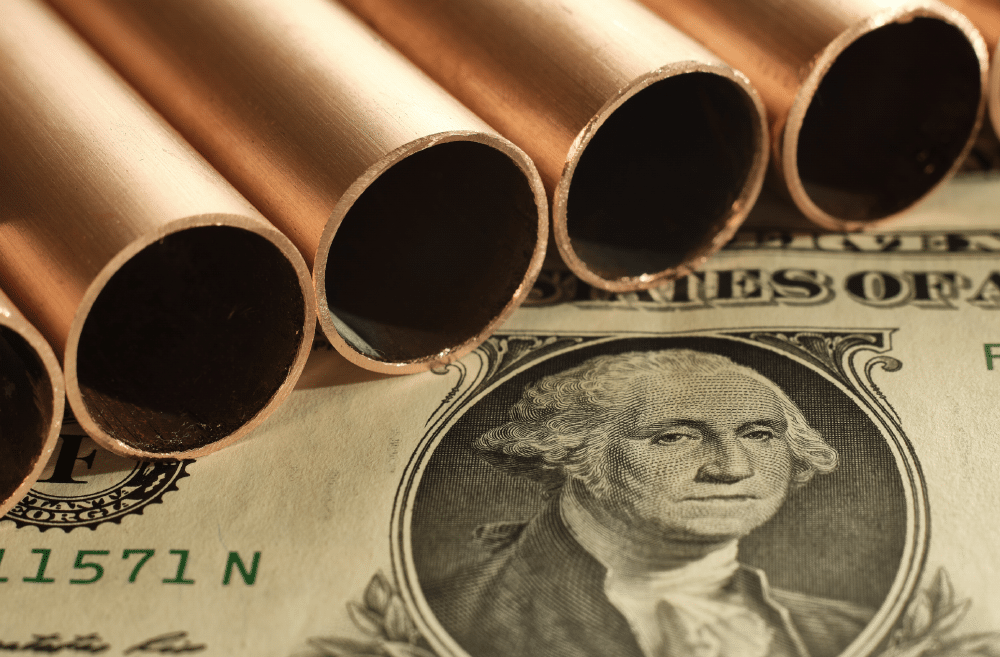Copper Price Roller Coaster a Wild Ride in 2023: From Highs to Lows and Back Again

It’s safe to say that the copper price index witnessed an interesting 2023 thus far. Indeed, the market’s been volatile, so there were more than the usual ups and downs. Mid-year, prices registered a major tumble because of the fumble in China’s economy. However, soon after, they began clawing back to a respectable level.
Prices began over US $8,000 per metric ton, even touching a high of $9,356 per MT in January. But by the end of Q2, they dropped back to $8,315 per MT. Now, investment bank Goldman Sachs reports that China’s demand for certain commodities, including copper, will increase despite the Red Dragon’s faltering macroeconomic metrics.
China Continues to Hold Sway
According to this report, Goldman Sachs stated that China’s copper requirement shot up by 8% year on year. Meanwhile, iron ore demand increased by 7%, eclipsing Goldman’s full-year expectations.
Analysts link this demand to a resurgence in the green economy and property completions. Indeed, the country’s solar installations significantly pushed up copper demand, as China’s operating solar capacity recently passed that of the rest of the world combined. Manufacturing, too, has added its own demand for base metals.
But here’s the thing – the fresh Goldman Sachs inputs came just ahead of copper’s drop to its lowest level in six months. Therefore, while the copper price index bounced 5.5% from a six-month low of US $7,899 a ton, the outlook for copper for the rest of 2023 remains “iffy,” according to some analysts.
Crush your competition by getting access to weekly metal market intel. Opt into MetalMiner’s free weekly newsletter.
China’s Commodity Hunger Continues

On May 24, 2023, the copper price index fell to a six-month low before making up its way to US $8,335 on the London Metal Exchange. According to this report, Citibank and other firms forecast prices falling to $8,000 in about three months.
The new Goldman Sach report says that despite worries about China’s overall economy, its appetite for some commodities continues to increase. The firm says the positivity reflected in the country’s industrial growth index. Industrial production was up 4.5% in August compared to a year ago, beating the previous forecast of 3.9%. In the same period, value-added equipment manufacturing rose up 5.4% year on year.
MetalMiner’s MMI report includes 10 metal price reports and can serve as an economic indicator for contracting, price forecasting, and predictive analytics. Sign up here.
Confusion Prevails as Multiple Factors Continue to Affect the Copper Price
Before Goldman Sachs’ new report, there were rumors of copper prices falling due to recession risks. Recently, China’s own metal information network, Antaike, predicted a drop to $7,000 in the second half of 2023 because of poor demand growth.
According to a Hindu Business Line report, at the end of Q1, another analysis firm, ING Think, reported that the poor recovery in China’s demand would see the copper price decline further. It pointed out that exchange inventories were going up, and LME stocks had nearly doubled in the past month.

A report by the International Copper Study Group also predicted a surplus of 3,320,000 tonnes in the year’s first quarter. This was far more than the slight surplus of 8,000 tonnes in the same period in the previous year. Meanwhile, research agency BMI, pointed out that the metal was under pressure from multiple angles, including weak physical demand. However, there had been some easing of supply by key producing nations in Latin America, leading to the rise in inventories.
Copper Price Index not Just Impacted by China
A few months ago, commodities agency Trafigura predicted that copper prices could hit a new high in 12 months, fueled by a resurgence in the Chinese economy and supply issues. Its forecast predicted prices might touch an all-time high of US $10,845 and could go even beyond $12,000.
On the one hand, you have copper price supplies and price fluctuations directly linked to the events in China. Yet other geopolitical factors could also affect metal prices. Firms like Goldman Sachs continue to predict that 50% of the copper supply will come from unexpected places like the Democratic Republic of the Congo, Botswana, and Mongolia. While these countries contain higher reserve grades, they face hurdles in supply such as lack of expertise and their own prevailing laws. Any supply issues that may crop up in these geographies could also reflect on the copper price index.
Make sure you are following the 5 best practices of sourcing copper.



Leave a Reply